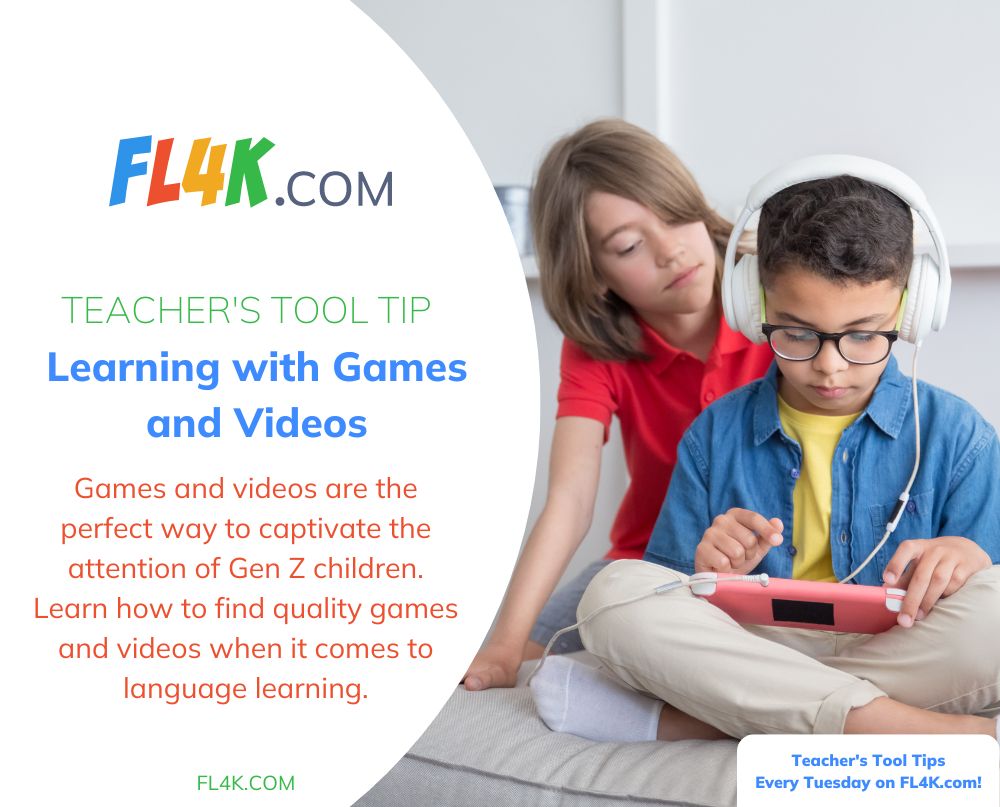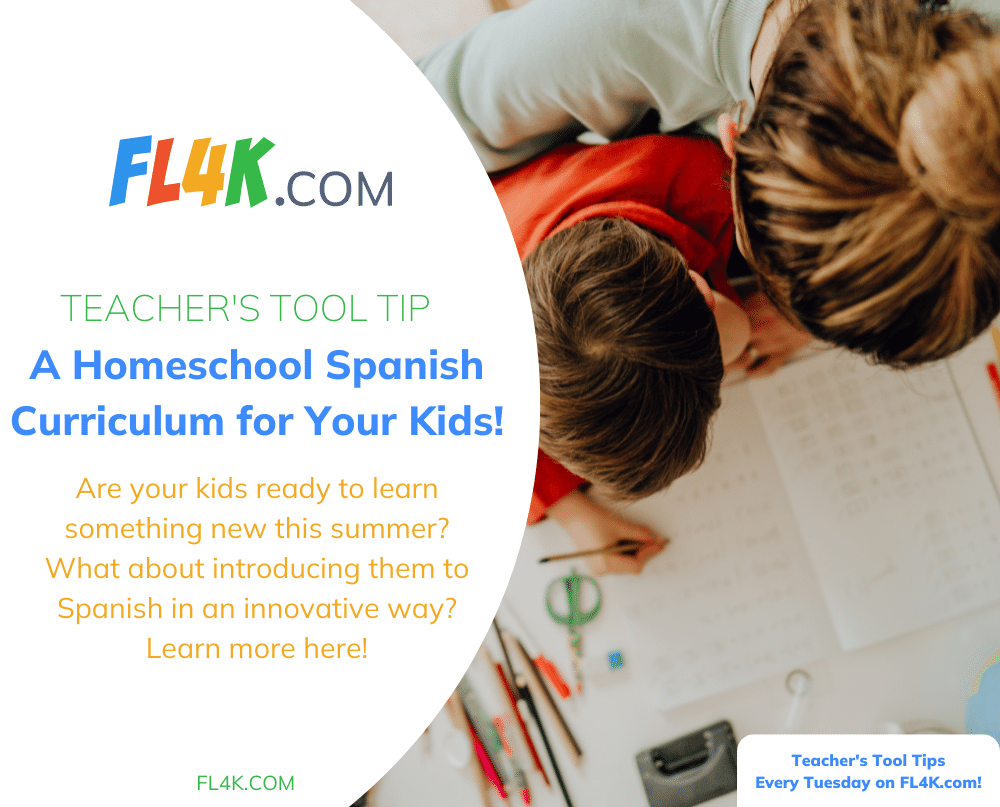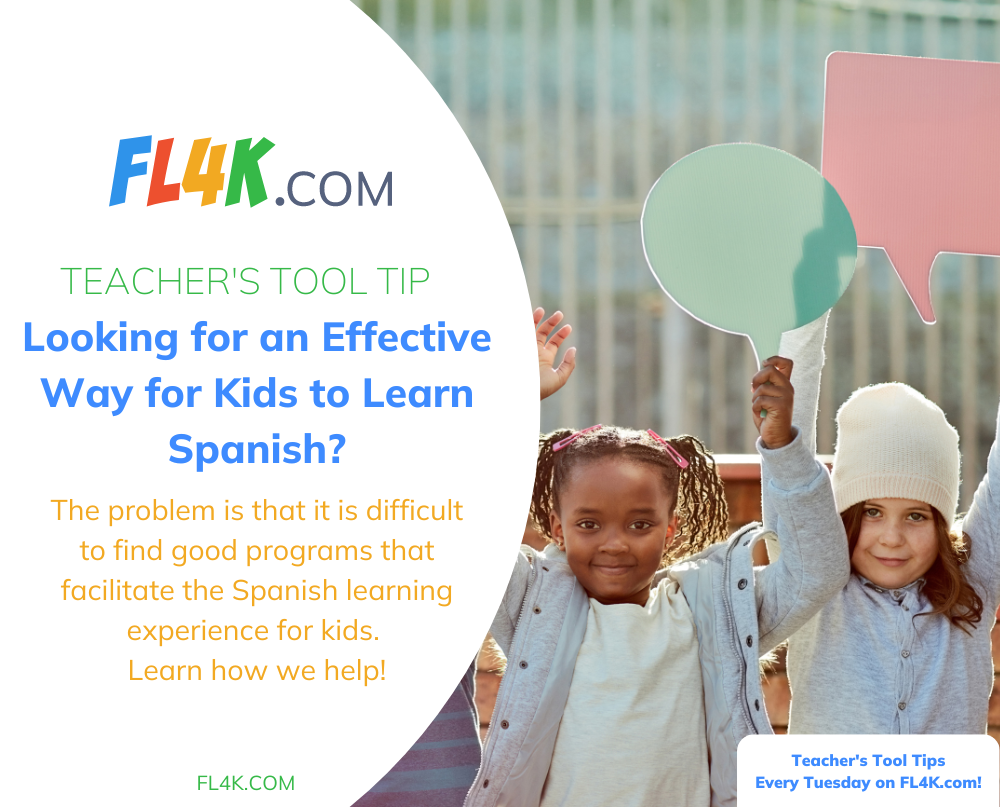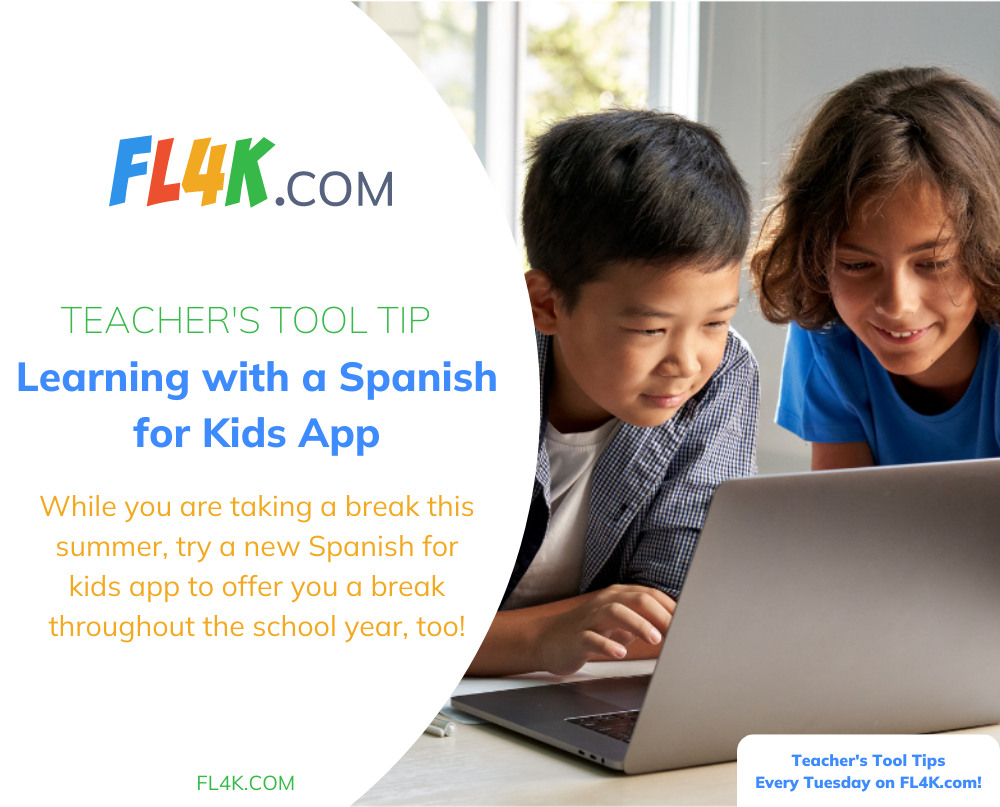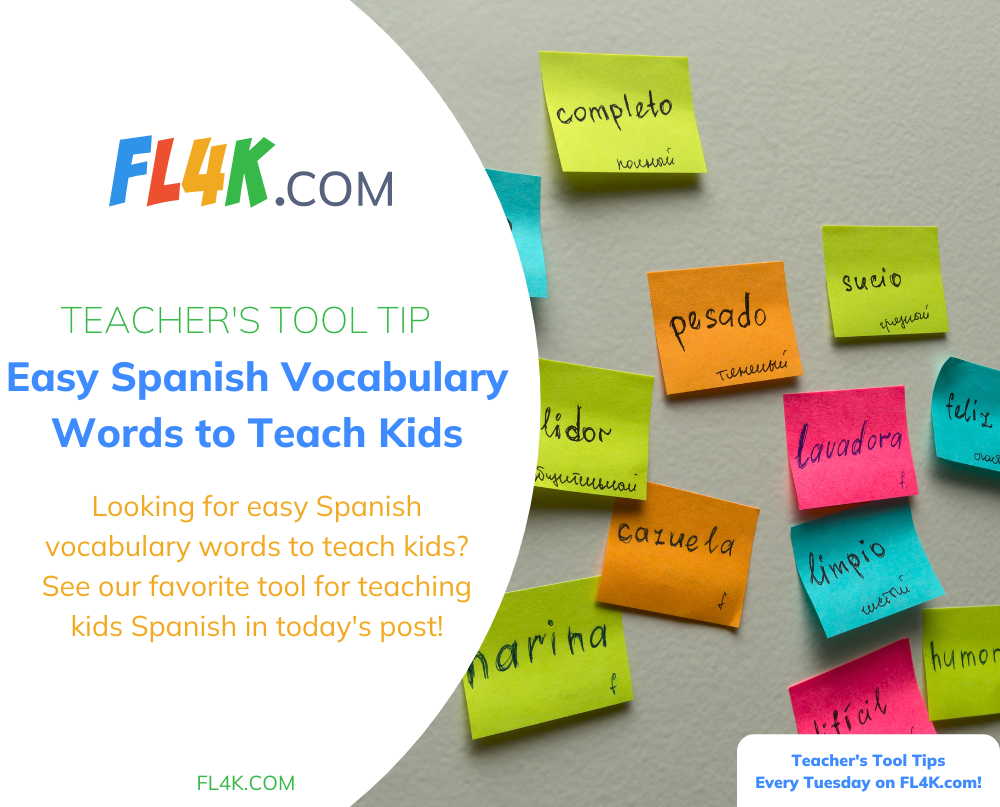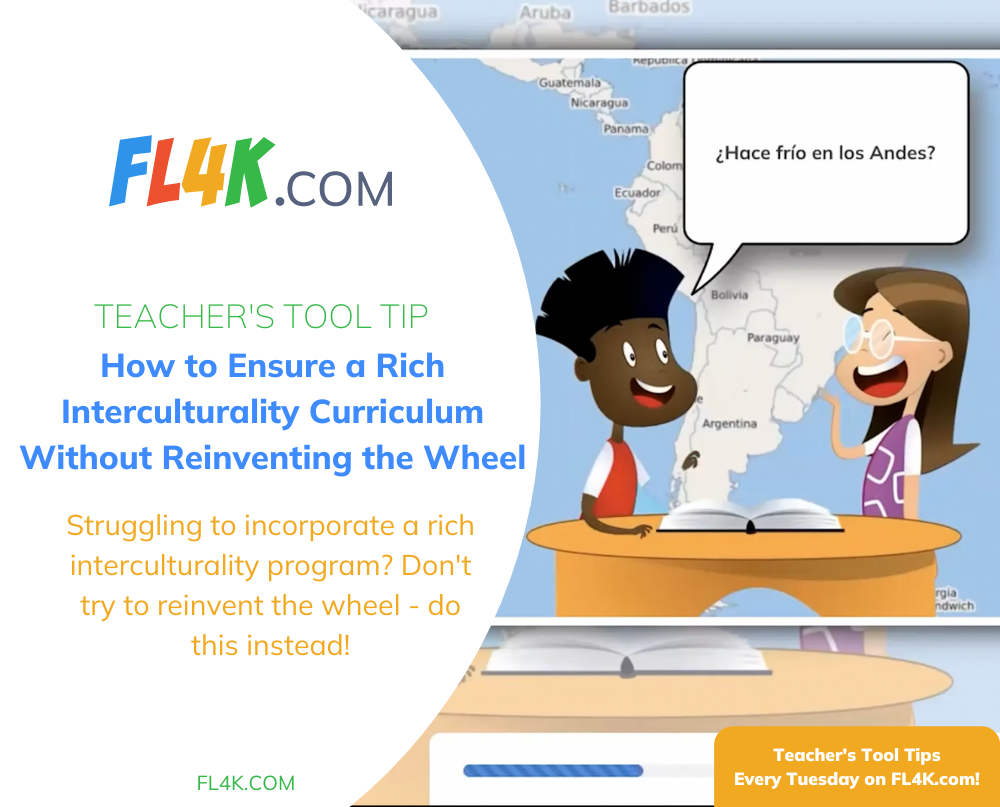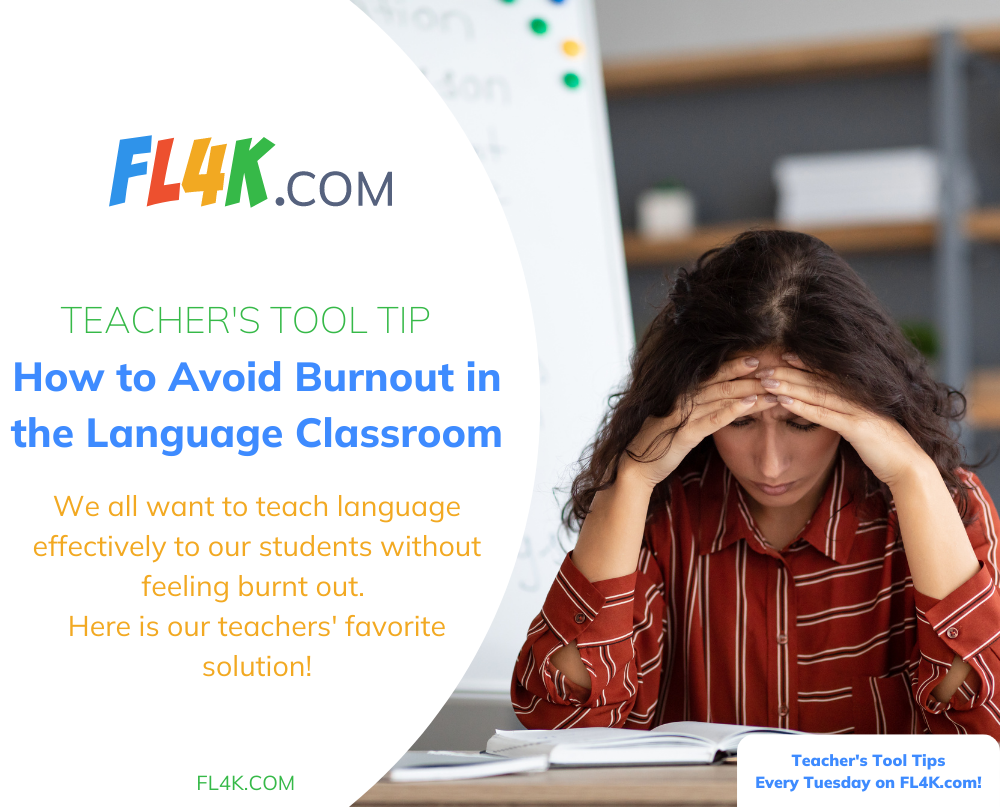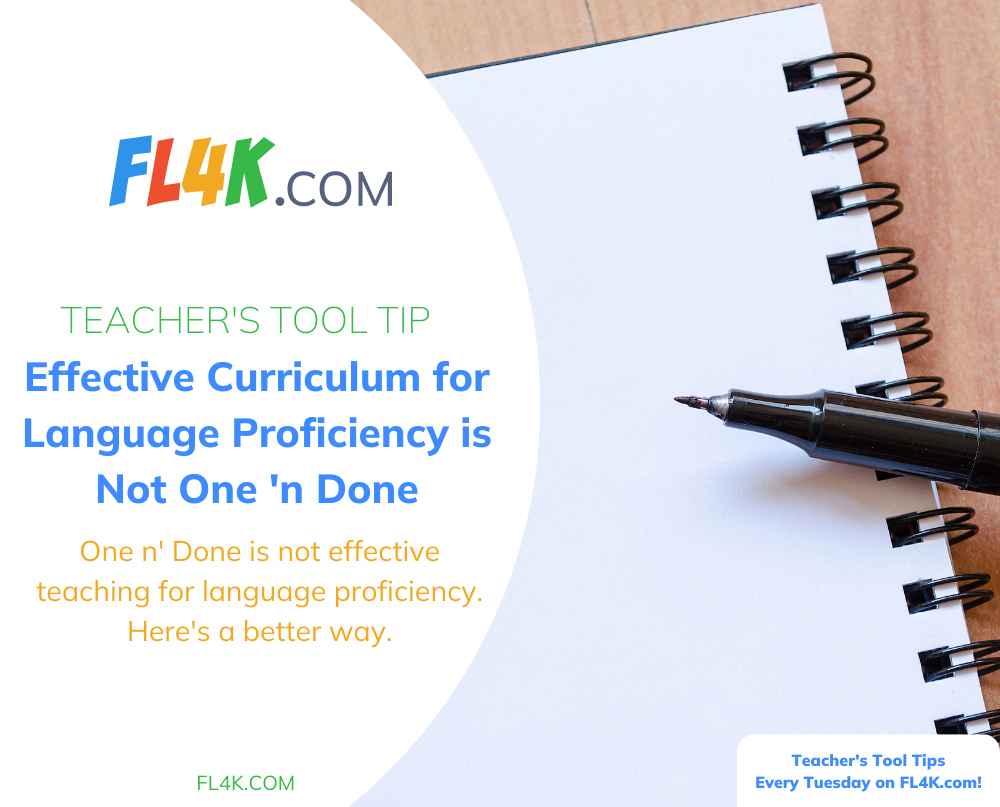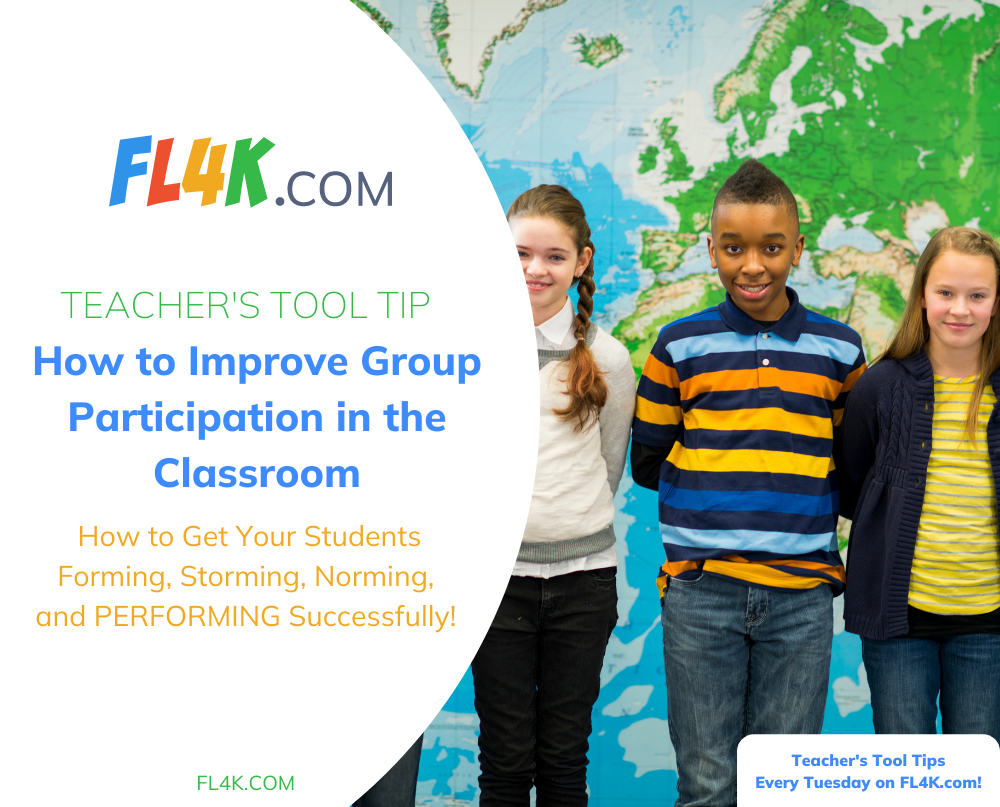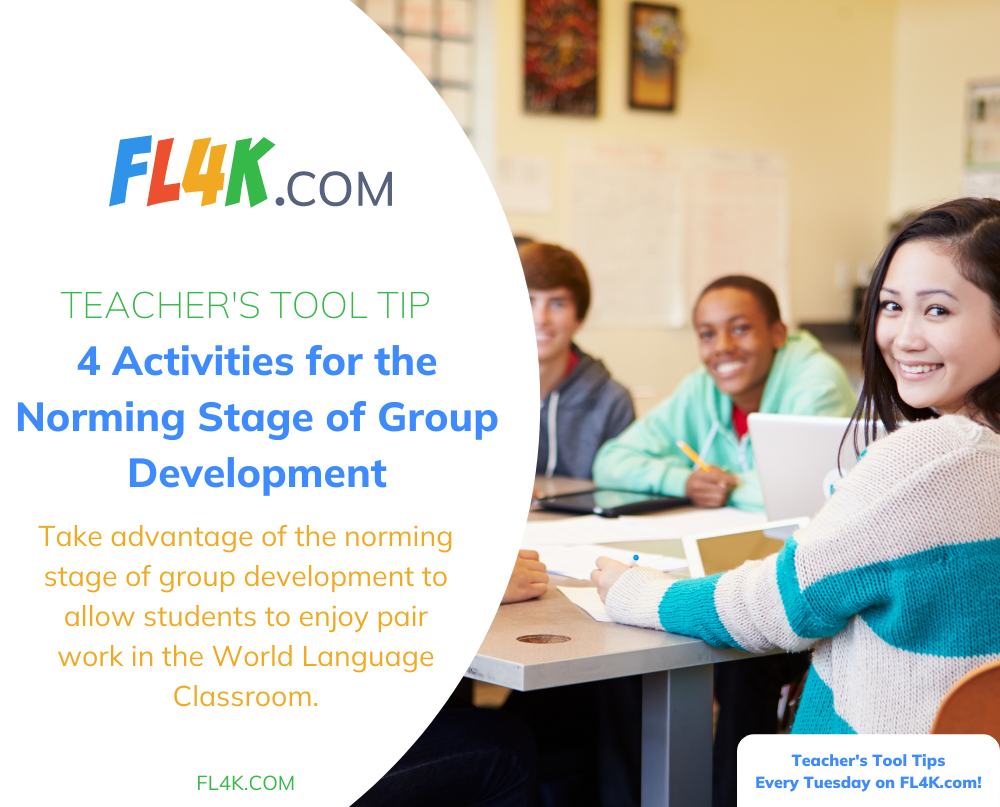Whether you are a parent, a teacher, or a parent-teacher, I am sure that you are always looking for innovative and engaging ways for your children to learn another language.
The truth of the matter is that this generation of digital natives is not particularly easy to teach due to their statistically proven shorter attention spans. They are used to having easy access to entertainment through their mobile devices.
We can turn a blind eye to this reality and continue to convince ourselves that the way kids learn best is the same as it was when we were children, but the facts show that the digital generation has rewired their brains. They need interactive and innovative learning strategies that help them to stay focused and engaged in learning.
Games and videos are the perfect way to captivate the attention of Gen Z children. The problem is that it is hard to find quality games and videos when it comes to language learning.
At FL4K, a teacher team with over 100 years of experience has joined designers and developers to create a state-of-the-art curriculum that includes Spanish games and videos that both teach and entertain in a way that keeps students engaged. There are many entertaining, even addictive games and videos on the market that are popular with Gen Zers, but they are not specifically designed to teach a second language.
Our games and videos are all about embedding language within a context that makes language functional and memorable. We have designed two games and a video series that follow a culture curriculum through eight different Hispanic cultures. Language students are learning a second language while developing a rich intercultural awareness that is preparing them to be global citizens.
Let’s look at the games and videos we offer through FL4K.
Fly Swatter Game
The first one is based on a very old-fashioned game, Fly Swatter, that many language teachers will remember. It involved a real flyswatter that kids used to slap words that were either written or posted on a white or blackboard. Language teachers would feed words to students, have them find an associated word or translation of a word, and have them slap it with the flyswatter. It was a way to engage students in a classroom game that kept learning active and fun.
The problem with the game was that the words were more or less isolated vocabulary with limited capability to give students the opportunity to compete against themselves or as a class against themselves or against other classes.
Our Fly Swatter game does just this. In each game, the student has a digital flyswatter that they use to swat as many flies as possible within a round.
For example, a student would hear and read a prompt such as, “Voy aquí para estudiar.” They then would have to choose the correct response of “A la biblioteca” from a group of 5-6 flies moving around on the screen. This group of flies represents many places that one might go like “Al supermercado,” “Al gimnasio,” “Al parque,” etc.
The fly games correspond to the 8-culture curriculum, reinforcing all that the students have learned about another culture (Hispanic is our first curriculum, but many other languages/cultures will be available in the future) while at the same time reinforcing the functional vocabulary and structures that are carefully scaffolded and embedded in the games.
Through games and videos in FL4K, the students expand their global knowledge while at the same time building language proficiency in a second language.
The rich and varied culture curriculum delves into global challenges like deforestation and climate change while exploring AP themes of Family, Beauty and Art, How Science and Technology Affect Our Lives, Factors that Influence the Quality of Life, and Environmental and Societal Change with the idea of preparing them for advanced language study in the future.
Categories of study for each cultural unit include geography and climate, citizens, sites of interest, nature, lodging, adventure, food, products, art, and other cultural influences such as Afro-Latino and Asian. All of this content is reinforced with games that teach functional language and vocabulary.
Bounce Game
Another game that is included with each lesson is called Bounce. Students match images and language, but not in an isolated way.
Images of cultural content will appear in the form of balls flying around a screen and the students will hear functional language like, “¿Dónde está el delfín rosado?” while trying to click on the corresponding image.
When students hear, “¿Dónde está_____?” over and over, they learn to use it actively in a way that is much more effective than rote memorization that is quickly lost once a student has been asked to reproduce it on a quiz or test. Students build proficiency in practicing functional language to communicate in the real world.
Video Series
In addition to these state-of-the-art games, FL4K has an entertaining video series that follows a clever narrative involving the lives and interests of three brothers.
Functional language is scaffolded and embedded in a context that makes the real-world language easy to learn! Kids can actually start speaking another language right away.
In addition, there is built-in practice with interactive dialogues and questions that allow students to test their knowledge after each lesson and prove what they have learned at the end of a unit/level with built-in can-do’s.
Kids love the instant feedback that this language program offers! The Spanish games, videos, and other interactive features are rolled into one platform that is easy for kids to navigate on their own with guidance from parents and educators. You really have to see it to believe it!
Take a peek at FL4K.com to see demos and read more about the available curriculums. If you want your students and/or children to learn another language while building cultural awareness with games and videos that motivate and actually help them to develop practical language proficiency, FL4K may be what you have been looking for!
Maybe your children are even starting to experience the mid-summer doldrums. Take the opportunity now to get them started with our free summer trial!
If you are a parent that would like to learn another language right along with your children, FL4K is a great opportunity, too!
